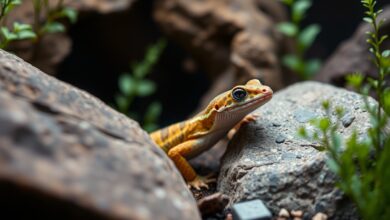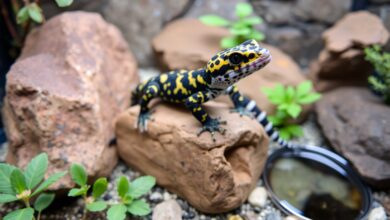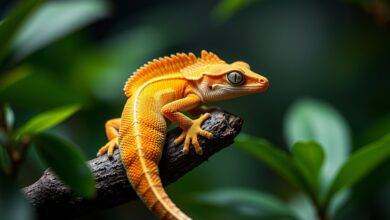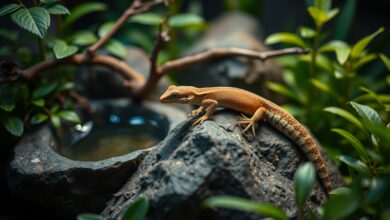Super Giant Leopard Gecko – Size, Care, and Feeding Tips
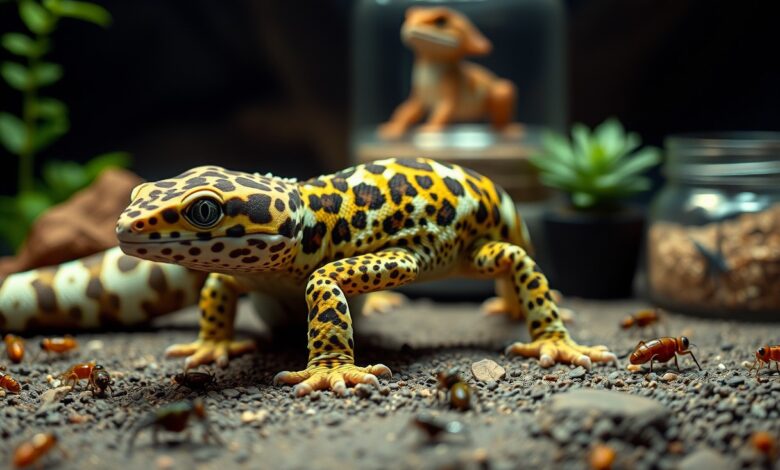
Gecko enthusiasts are often drawn to the Super Giant Leopard Gecko for its impressive size and unique personality. In this informative guide, you will learn about the optimal care requirements, feeding tips, and habitat setups necessary to keep your gecko healthy and thriving. With proper attention to their diet and environment, you can enjoy a rewarding experience and a long-lasting bond with your pet. Whether you’re a seasoned reptile keeper or a beginner, this post will equip you with the knowledge needed to ensure your Super Giant Leopard Gecko lives a fulfilling life.
Key Takeaways:
- Size: The Super Giant Leopard Gecko can grow over 10 inches long, making them one of the largest gecko species.
- Care: Providing a suitable habitat with proper temperature gradients, humidity levels, and hiding spots is imperative for their well-being.
- Feeding Tips: A balanced diet consisting of insects like crickets and mealworms, alongside calcium and vitamin supplements, is vital for their health.
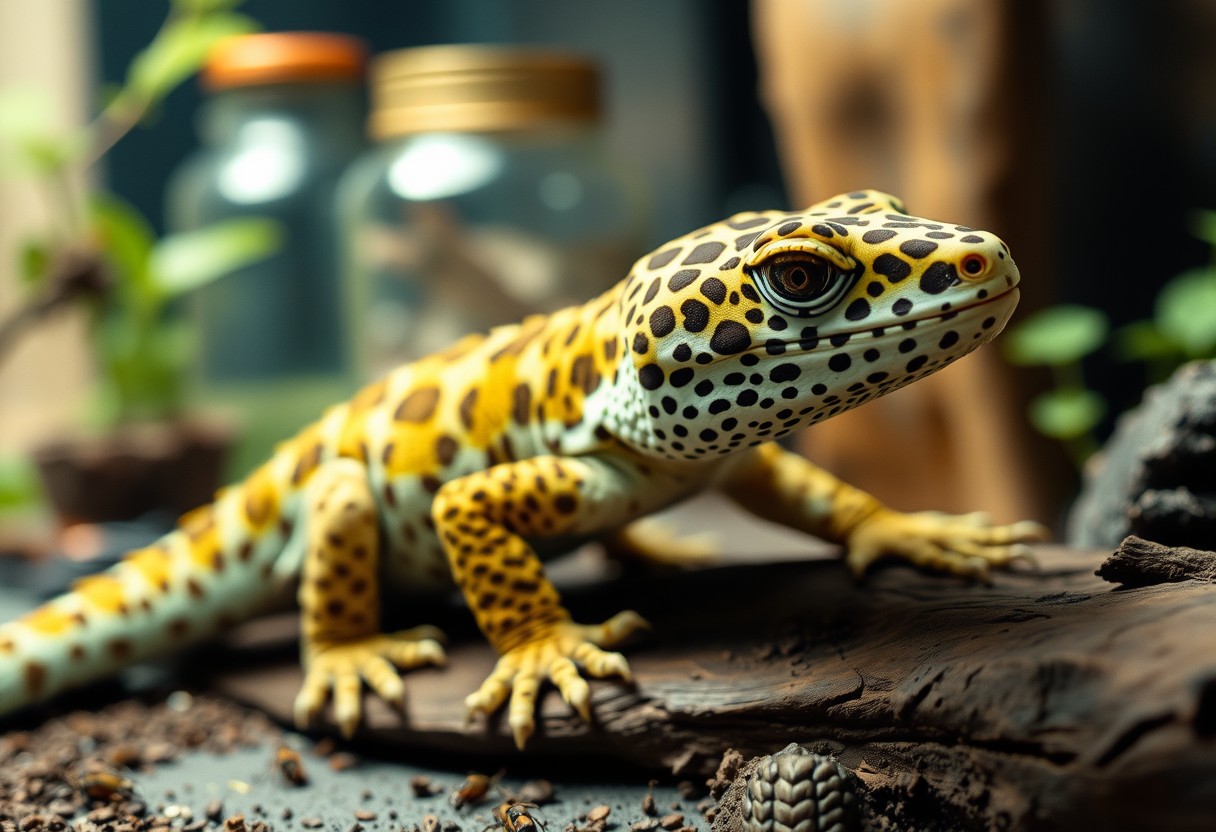
Overview of the Super Giant Leopard Gecko
A Super Giant Leopard Gecko is a remarkable morph of the common leopard gecko, known for its impressive size and docile nature. These unique reptiles can grow up to 14 inches long and weigh more than 150 grams, making them a favorite choice among reptile enthusiasts. Their striking colors and patterns also add to their appeal, making them not just pets but intriguing companions to observe.
Origin and Natural Habitat
Gecko species originate from various regions, particularly in the arid and semi-arid environments of Afghanistan, Pakistan, and India. In their natural habitat, they thrive in rocky terrains and grasslands, often hiding in crevices or burrows to escape the heat of the day. This habitat provides them with the necessary warmth and shelter while they hunt for insects and other small prey.
Distinctive Features and Size
Natural characteristics of the Super Giant Leopard Gecko include vibrant colors ranging from yellows to oranges, along with distinct spotting patterns. With a body length exceeding 14 inches and a weight that can surpass 150 grams, they stand out among other leopard gecko morphs. Their stocky build and bushy tails not only contribute to their size but also serve as energy reserves.
Due to their larger than average size, Super Giant Leopard Geckos require specific care to accommodate their needs. They have a robust body structure and a more pronounced pattern on their skin, which varies greatly among individuals. The combination of their elongated physique and vibrant coloration makes them not only a visually striking pet but also a pet that demands your attention and commitment for proper care and happiness.
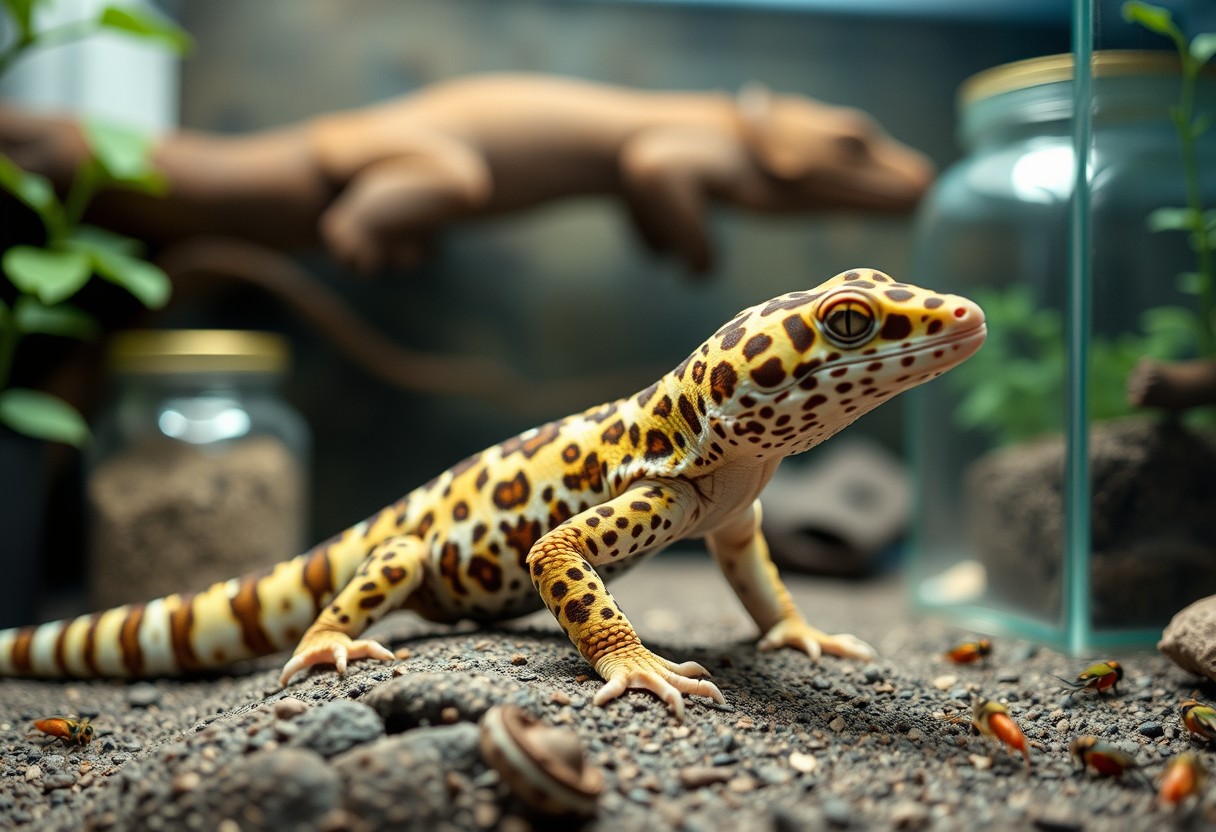
Proper Housing Requirements
One important aspect of keeping a Super Giant Leopard Gecko is ensuring they have the right housing setup. You should follow guidelines outlined in the COMPLETE : Leopard Gecko Care Sheet to create an optimal environment for your pet. A suitable enclosure is vital for their health and well-being.
Enclosure Size and Setup
At a minimum, your Super Giant Leopard Gecko requires a 40-gallon tank, although larger enclosures are always better. Adding hides, such as caves or logs, and providing adequate flooring, like slate or sand, will create a safe and comfortable habitat for your gecko.
Environmental Conditions and Accessories
Accessories play a significant role in maintaining the right environment for your gecko. You must provide a proper temperature gradient within the enclosure, with a basking area around 90°F and a cooler side around 75°F. Additionally, humidity levels should be kept between 20-40% to prevent health issues. Substrates like reptile carpet or paper towels are safer options to avoid impact hazards.
It is vital to monitor and maintain the conditions in your Super Giant Leopard Gecko’s habitat. Ensure that your enclosure has adequate lighting and heating, which helps regulate their metabolism. Keep an eye on your gecko’s behaviour, as changes can indicate stress from improper temperatures or humidity. Providing hides, climbing structures, and accessories like calcium dishes can enhance their well-being and encourage natural behaviours, leading to a happy and healthy gecko.
Feeding Guidelines
Unlike other reptiles, Super Giant Leopard Geckos have specific feeding requirements that must be met to ensure their health. It’s important to provide a balanced diet consisting of live insects such as Leopard Gecko food and diet advice highlights crickets, mealworms, and roaches as suitable choices. Adequate hydration is also crucial, so be sure to provide fresh water at all times.
Nutritional Needs
For optimal health, Super Giant Leopard Geckos require a diet high in protein and appropriate calcium and vitamins. A balance of these nutrients will prevent metabolic bone disease and support their growth. Ensure that you gut-load your insects before feeding them to your gecko to maximize their nutritional content.
Recommended Diet and Supplements
Around 80-90% of your gecko’s diet should consist of insects, while the remaining 10-20% can include occasional fruits and vegetables. You should also incorporate calcium and vitamin supplements to promote strong bones and overall health. Dust their food with a calcium supplement without phosphorus at least a few times a week, and alternatively with a vitamin D3 supplement.
Guidelines for feeding your Super Giant Leopard Gecko should be closely followed to ensure its health and longevity. Prioritize live insects such as crickets and mealworms, which are both nutritious and appealing to your gecko. Avoid feeding toxic foods like citrus fruits or avocado, as these can cause serious harm. Always dust insects with supplements to provide crucial nutrients. Provide fresh water daily to maintain hydration, and be aware that overfeeding can lead to obesity, so monitor portion sizes carefully.
Care Essentials
Once again, providing the right care for your Super Giant Leopard Gecko involves ensuring a proper habitat, maintaining an appropriate temperature gradient, and offering a balanced diet. Your gecko requires a comfortable substrate, adequate hiding places, and a secure enclosure to feel safe. Regular cleaning and monitoring of humidity levels also play important roles in keeping your pet healthy and happy.
Health Monitoring
Essentials for health monitoring include keeping an eye on your gecko’s eating habits, shedding patterns, and overall activity level. Observe for any signs of distress or illness, such as lethargy or lack of appetite; prompt attention may prevent more serious health issues.
Handling and Interaction
Monitoring your Super Giant Leopard Gecko’s behavior is key to successful handling and interaction. While gentle handling can build trust, avoid overdoing it as these reptiles can become stressed. Start by allowing your gecko to acclimate to your presence, and gradually increase physical interaction as it becomes more comfortable.
Even though handling can be a rewarding experience for you and your gecko, always prioritize your pet’s comfort. Start slowly; let your gecko approach you on its own terms, as this fosters a positive relationship. Be aware of signs of stress like tail twitching or sudden movements, as they indicate your gecko needs a break. Always support your gecko’s body and avoid holding it too tightly to prevent injury. With patience and care, you can enjoy a fulfilling interaction with your Super Giant Leopard Gecko.
Common Health Issues
Now, as a responsible Super Giant Leopard Gecko owner, you should be aware of potential health issues like metabolic bone disease, respiratory infections, and parasites. These reptiles can experience health complications caused by improper care, such as insufficient UVB lighting or an unbalanced diet. Identifying these risks early on can help ensure a long, healthy life for your pet.
Preventative Care
To maintain your gecko’s health, establish a consistent care routine that includes proper lighting, temperature, and humidity levels. Providing a well-balanced diet and regular vet check-ups can also help prevent illnesses. Additionally, keep their habitat clean to reduce the risk of infections and stress.
Recognizing Symptoms
Among the signs of illness in Super Giant Leopard Geckos are abnormal behavior, weight loss, lethargy, and poor appetite. Monitoring changes in your pet’s behavior and physical condition is vital for early detection of potential health issues that require prompt attention.
Recognizing symptoms in your Super Giant Leopard Gecko can significantly impact their overall well-being. Watch for any abnormal behavior such as hiding more than usual, as this could indicate stress or illness. A sudden drop in appetite or weight loss are major red flags, suggesting health issues. If you notice signs such as swelling or discharge from the eyes or nose, it’s vital to seek veterinary care immediately, as timely intervention can lead to better outcomes for your beloved pet.

Breeding Super Giant Leopard Geckos
Keep in mind that breeding Super Giant Leopard Geckos requires a deep understanding of their Leopard Gecko Care Guide. A healthy environment, proper nutrition, and attentive care are important for successful breeding. Make sure to familiarize yourself with genetics and the compatibility of your geckos to achieve desired morphs and traits.
Breeding Process and Considerations
Between selecting a compatible pair and providing them with the right habitat, the breeding process demands careful thought. Ensure your geckos are in optimal health and properly conditioned before introducing them. Gradual mating and monitoring signals of receptiveness in females will help facilitate a successful breeding experience.
Care of Hatchlings
Care for your hatchlings is vital for their growth and development. Providing a proper environment, nutrition, and hydration will set them up for success. You might also need to create separate enclosures to minimize territorial disputes and ensure healthy living conditions for each hatchling.
For instance, ensure that your hatchlings are kept in a warm enclosure with a temperature gradient and humidity levels suitable for young geckos. Provide them with a diet rich in high-quality insects, as they have specific nutritional requirements for rapid growth. Be vigilant about monitoring their health closely; any signs of illness can escalate quickly in young geckos. Additionally, temperature regulation and proper hydration are key factors that can influence their survival and well-being.
Final Words
On the whole, caring for a Super Giant Leopard Gecko requires understanding their unique size, habitat needs, and dietary preferences. By providing adequate space, maintaining proper temperatures, and offering a balanced diet rich in insects and supplements, you can ensure your gecko thrives. Staying informed about their specific care requirements will enhance your experience as a pet owner and contribute to the well-being of your extraordinary reptilian friend.
Q: What is the average size of a Super Giant Leopard Gecko?
A: Super Giant Leopard Geckos are one of the largest morphs of leopard geckos. Adult males typically reach lengths of 10 to 14 inches, while females tend to range from 9 to 12 inches. Some exceptional individuals may exceed these averages, reaching lengths up to 16 inches. Their robust size contributes to their unique presence and care requirements.
Q: What are the necessary care requirements for a Super Giant Leopard Gecko?
A: Providing proper care for a Super Giant Leopard Gecko involves maintaining an appropriate habitat and environment. A spacious terrarium of at least 40 gallons is recommended. The enclosure should have a warm side (around 88°F to 92°F) and a cooler side (around 75°F to 80°F). Substrate options include reptile carpet, paper towels, or tile. Hiding spots and climbing opportunities are important for their well-being. Ensure a regular cleaning schedule to maintain hygiene and provide fresh water daily.
Q: What should I feed my Super Giant Leopard Gecko to ensure a balanced diet?
A: Super Giant Leopard Geckos thrive on a diet of live insects. Crickets, mealworms, roaches, and superworms can be offered, ensuring they are appropriately sized for your gecko. It’s advisable to dust their food with a calcium supplement at every feeding and provide a multivitamin supplement once a week for optimal health. Adult geckos can be fed every other day, while juveniles may need daily feedings. Always consult care guides and veterinarians for specific dietary needs as they can vary with age and health status.


